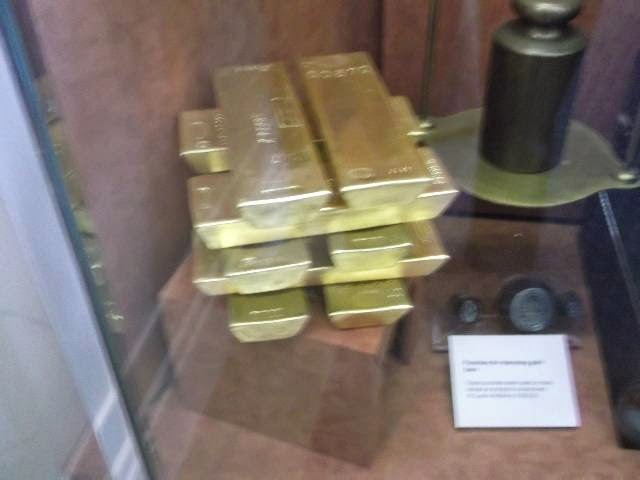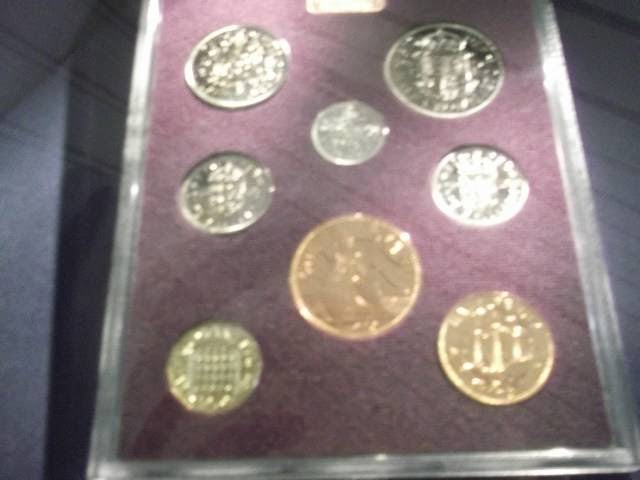Threadneedle
Street EC2R 8AH
Wednesday
April 24th 2014
Jo was fielding grandchildren
so Mary and I braved the multiple exits of Bank Station (having arrived there
via the DLR) to meet at the Bank of England Museum. It is quite hard to photograph
from outdoors and one is therefore very reliant on the various models and
prints of what was clearly designed as a well-fortified but attractive building.
The Museum is free which might in part account for its popularity – today there
were two overseas groups of students (bored French girls hanging out in the
loos – plus ça change) so presumably still on holiday, and both secondary and primary London groups who were back in
harness. The primary children were a joy, enthusiastic and fizzing as they
completed their quiz sheets and played at lifting the gold bullion. There is
nothing immediately attractive to children, with most of the exhibits being a
series of glass cases, and a very few interactive items inviting you to ‘balance
the economy’ and keep inflation at bay – as if.
My abiding memory of a long
ago previous visit (accompanying my own primary age children, as it happens)
was of a range of bank notes and coins and this is still a substantial part of
the exhibition. Today we had time also to admire this building which started in 1788 and had three
upscalings, including the seven new storeys that were added in 1925. The banking
happened initially in the Grocers Hall in Poultry, with substantial input from
the Goldsmiths’ Company (who held the
gold), and then transferred into its purpose-built premises in 1788. Prime
architects of their day have been involved but the major vision came from Sir John Soane.
After the sections detailing
the building’s evolution there are more detailed references to political and
other changes which impacted on monetary policy, linked also to the different
governors who headed up the Bank over the 300+ years. Houblon was the first and
already worrying about ‘utterers’, that is rogues who were forging the fairly
easy to copy early bank notes. The most poignant display is for Sir Kenneth Grahame,
author of ‘the Wind in the Willows’ whose resignation letter is a model of not
only beautiful handwriting but moving and well-argued reasons for giving up, Mary
and I were pleased to hear that the man, who was clearly suffering from mental
exhaustion, was able to admit it and enjoyed a further 25 years of life; a
rather better outcome than some modern day pressured bankers.
What the children seemed to enjoy
most was to admire the gold bars in a modest pile (not nearly as many as are
stored in the secure bits of the Bank) and attempt to lift one. The Bank’s silver was also displayed with a
really pretty basting spoon and sugar shaker reminding us that the banking
hierarchy probably dined pretty well also.
Much of the display is
devoted to showing the development of the banknote over the years, with the
seven or so security devices now built into notes to prevent forgery –
microlettering, motion thread, metallic thread, holograms, raised print and
watermarks. Phew: you wonder with all
that there’s time to think about the more controversial question of who should
go on the notes.
And indeed there is no
mention of it herein the museum.
The last few cases (if you
have gone round in the correct clockwise direction) hold coins through the ages,
which somehow look smaller than when they are in your purse or pocket. The Museum
is able to have some nice shiny coins, and we noted a few empty cases – waiting
for the next development in banking we supposed.
While we are more likely to join
an anti-capitalist demonstration than a ‘Keep the Pound’ one we found enough to
keep our interest for nearly 90 minutes. I could quote you endless and contradictory
maxims about money but while it’s still needed in this format the Bank of
England seems as good a place as any to store it, invest it and regulate it.
The Bank provides both a map
guide to the exhibits and a clear summary of its role. here is the website if you wish to plan a visit. We spotted some chaps in
pink, and I mean pink not the red that foxhunters call ‘pink’, tailcoats and it
turns out they are the Bank’s security personnel , dressed as once the footmen
were. Their numbers are dwindling, presumably the uniform being a turn-off for
many, but it was good to hear the Bank employed its own security staff directly,
not going through any of the global firms who do this job often indifferently. There is a small shop with rather pricey items
and the afore mentioned toilets, located at the far end from the entrance








No comments:
Post a Comment